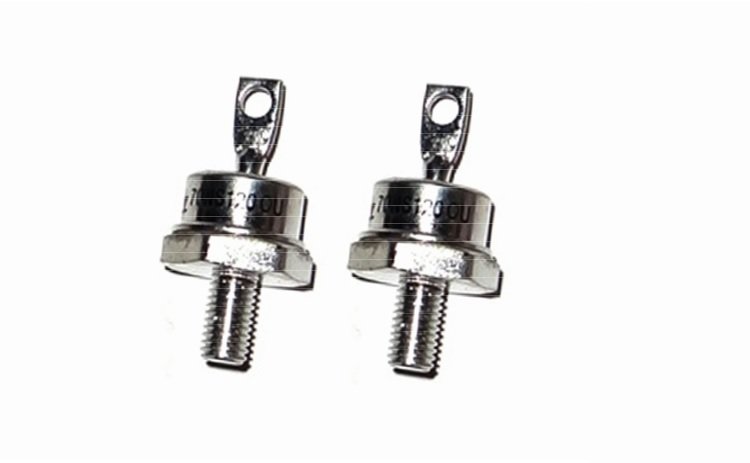
An electrical circuit’s unknown champion, the Zener diode, is essential for preventing voltage spikes and keeping the voltage stable. The need for Zener diodes capable of handling 50W or more is growing due to the ever-changing nature of electronic applications.
The real question many engineers face is choosing the appropriate Zener diode 50w for an application. We are here to provide insights and practical guidance.
Navigating the complicated landscape of Zener diode selection.
Power Handling:
In power supplies and voltage regulation circuits, Zener diodes’ power handling capabilities are crucial. A diode with a power rating over 50W is needed – engineers cannot use this as a preference but a need. This assures the diode can regulate power dissipation without overloading, which could cause failure and jeopardize the circuit.
Peak power, average power, and duty cycle must be addressed when assessing application power requirements. The diode’s power handling capacity should fulfil these needs and allow for unexpected power level changes. This proactive strategy ensures the Zener diode’s longevity and reliability in its intended application.
Voltage Rating:
One important in Zener diode selection is its voltage rating. Stable circuit operation requires matching the diode’s voltage rating to the application. Zener diodes with a voltage rating slightly above the output voltage improve circuit stability. Voltage variations could damage circuit performance this, giving engineers a margin of safety.
A complete application analysis must evaluate input voltage changes, load conditions, and potential transients to determine voltage needs. The correct voltage rating guarantees that the Zener diode retains its voltage regulation characteristics under different conditions, ensuring electronic system stability.
Knee-Zener current:
The Zener knee current is crucial to Zener diode performance. The diode needs this current to maintain its voltage regulation features. Choose a Zener diode with a knee current that meets application needs. Operating the diode below its knee current may cause circuit instability due to poor voltage regulation.
The right Zener knee current requires a thorough application examination. Making an informed decision involves understanding load circumstances, current changes, and external influences that affect diode performance. This rigorous approach guarantees the Zener diode operates within its limitations, improving electronic system reliability and stability.
Coefficient of Temperature
Understanding the temperature coefficient is vital when selecting Zener diodes because temperature changes can affect performance. In applications with temperature fluctuations, this is crucial. The temperature coefficient affects the diode’s voltage control throughout a variety of operating temperatures by indicating how much the Zener voltage changes with temperature.
Choosing a Zener diode with a temperature coefficient that matches the application’s environment is crucial. Ambient temperature, temperature gradients, and diode thermal stresses must be considered. A careful choice guarantees that the Zener diode functions reliably regardless of temperature.
Reverse Leak Current:
In precision applications requiring voltage regulation accuracy, Zener diode reverse leakage current is crucial. Reverse leakage current passes through a reverse-biased diode. This current must be minimized to avoid voltage control errors and preserve application precision.
To verify that the reverse leakage current meets the application’s strict criteria, carefully review prospective Zener diode datasheets. This requires a precise reverse-biased diode specification and characteristic study. This thorough examination ensures that the Zener diode fulfils application precision requirements, improving electronic system accuracy and reliability.
Package type:
Zener diodes come in surface-mount and through-hole configurations. Application needs, including space, assembly, and temperature concerns, determine package type. For seamless Zener diode integration into the electronic system, the package type must match the circuit layout and manufacturing method.
Understanding the circuit layout, component placement space, and assembly procedures helps choose the package type. Surface mount packages are good for small applications, but through-hole packages are easier to solder and more stable. The right package type enables functional compatibility and system integration of the Zener diode.
Dependability and longevity:
In applications that require continuous and stable performance, Zener diode dependability and durability are crucial. Choose high-quality, reliable components from reputable producers. The Zener diode’s lifespan and dependability can also be determined by studying its datasheet for MTBF and other reliability measures.
Beyond diode performance, reliability includes the manufacturer’s reputation, quality control, and industry norms. Choose a Zener diode 50w from a reputed manufacturer with a history of providing dependable components to improve electronic system reliability. To maintain performance and reduce essential application failures, reliability and lifespan assessments are proactive.
Conclusion:
Careful evaluation of the Zener diode 50w power handling capacity, voltage rating, temperature coefficient, reverse leakage current, package type, and reliability are essential when making your selection meeting the specific requirements of your circuit. When looking for detailed information about the specs and performance of Zener diodes, it’s best to consult the manufacturer-supplied datasheets.


